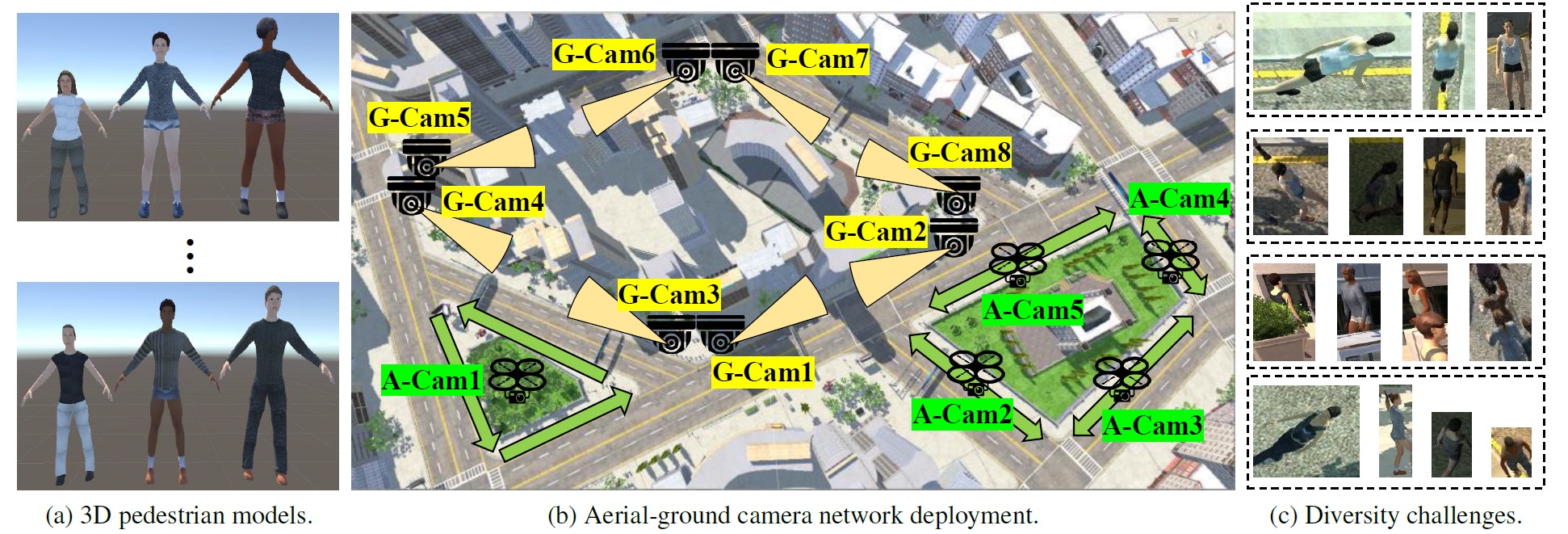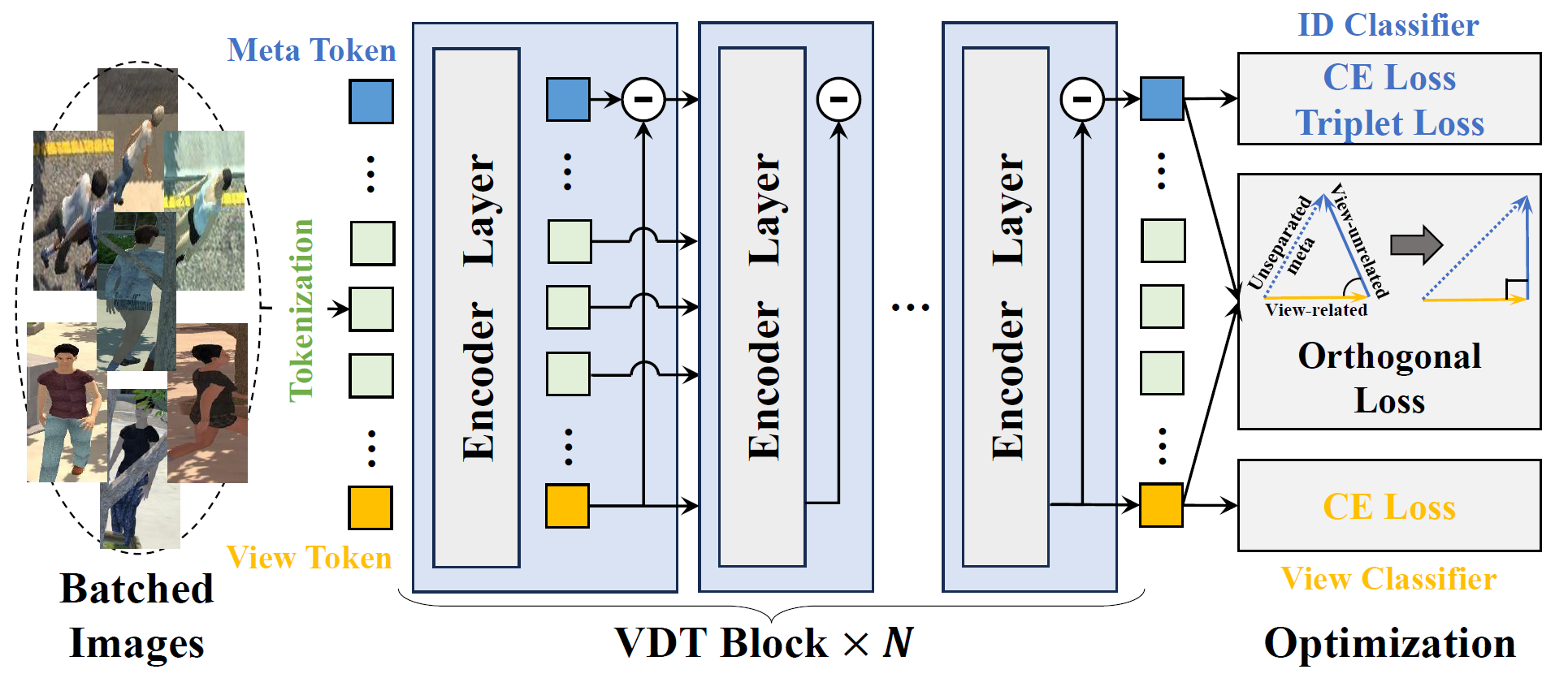View-decoupled Transformer for Person Re-identification under Aerial-ground Camera Network (CVPR'24) [paper_link]
- CARGO is a large-scale aerial-ground person re-identification (AGPReID) dataset, which captured from a synthesized scene in Unity3D.
- CARGO contains 13 cameras (8 ground and 5 aerial cameras), 5000 person IDs, and 108563 person images.
- Camera 1
$\sim$ 5 belong to aerial cameras, and Camera 6$\sim$ 13 belong to ground cameras. - In the aerial camera area, two different drone roaming strategies are designed according to the size of the surveillance area. For the small area (left area), we deploy one drone with a
$90^\circ$ overhead view, allowing it to move counterclockwise around each street. For a large area (right area), we deploy individual drones on each of the four streets with a$45^\circ\sim60^\circ$ tilt view, allowing them to move back and forth on corresponding streets. - Dataset Link: Google Drive
- We split CARGO into the train (51,451 images with 2500 IDs) and test sets (51,024 images with the remaining 2500 IDs) with an almost 1:1 ratio.
- Testing Protocol 1 (ALL) uses full test data and labels, which focuses on the comprehensive retrieval performance.
-
Testing Protocol 2 (G
$\leftrightarrow$ G) only retains the data under the ground camera in the test set (60 query IDs with 134 images, 2404 gallery IDs with 18,444 images). -
Testing Protocol 3 (A
$\leftrightarrow$ A) only retains the data under the aerial camera in the test set (89 query IDs with 178 images, 2447 gallery IDs with 32,268 images). -
Testing Protocol 4 (A
$\leftrightarrow$ G) relabels the original test set into two domains (aerial and ground domain) based on the camera label. - The training set of all testing protocols retains same.
Annotations are preserved in the name of each image by the format ``camID_time_personID_index.jpg''.
For example, ``Cam2_day_2519_320.jpg'' means that:
- Camera id is 2, and it belongs to the aerial view.
- Capture time is day. (day or night)
- Person id is 2519.
- Index is 320. (It has no practical meaning for you.)
- The datasets can only be used for ACADEMIC PURPOSES. NO COMERCIAL USE is allowed.
- Copyright © Sun Yat-sen University. All rights reserved.
Please refer to INSTALL.md.
Download the CARGO dataset and modify the dataset path. Line 22, 60, 100 and 140 in cargo.py .
self.data_dir = XXX
Download the ViT-base Pre-trained model and modify the path. Line 11 in VDT.yml:
PRETRAIN_PATH: XXX
Training VDT on the CARGO dataset with one GPU:
CUDA_VISIBLE_DEVICES=0 python3 tools/train_net.py --config-file ./configs/CARGO/VDT.yml MODEL.DEVICE "cuda:0"
Testing VDT on the CARGO dataset:
CUDA_VISIBLE_DEVICES=1 python3 tools/train_net.py --config-file ./configs/CARGO/VDT.yml --eval-only MODEL.WEIGHTS your_model_pth_path MODEL.DEVICE "cuda:0"
Codebase from fast-reid. So please refer to that repository for more usage.
If you find this code useful for your research, please kindly cite the following papers:
@InProceedings{Zhang_2024_CVPR,
author = {Zhang, Quan and Wang, Lei and Patel, Vishal M. and Xie, Xiaohua and Lai, Jian-Huang},
title = {View-decoupled Transformer for Person Re-identification under Aerial-ground Camera Network},
booktitle = {Proceedings of the IEEE/CVF Conference on Computer Vision and Pattern Recognition},
year = {2024}
}
If you have any question, please feel free to contact me. E-mail: zhangq48@mail2.sysu.edu.cn

